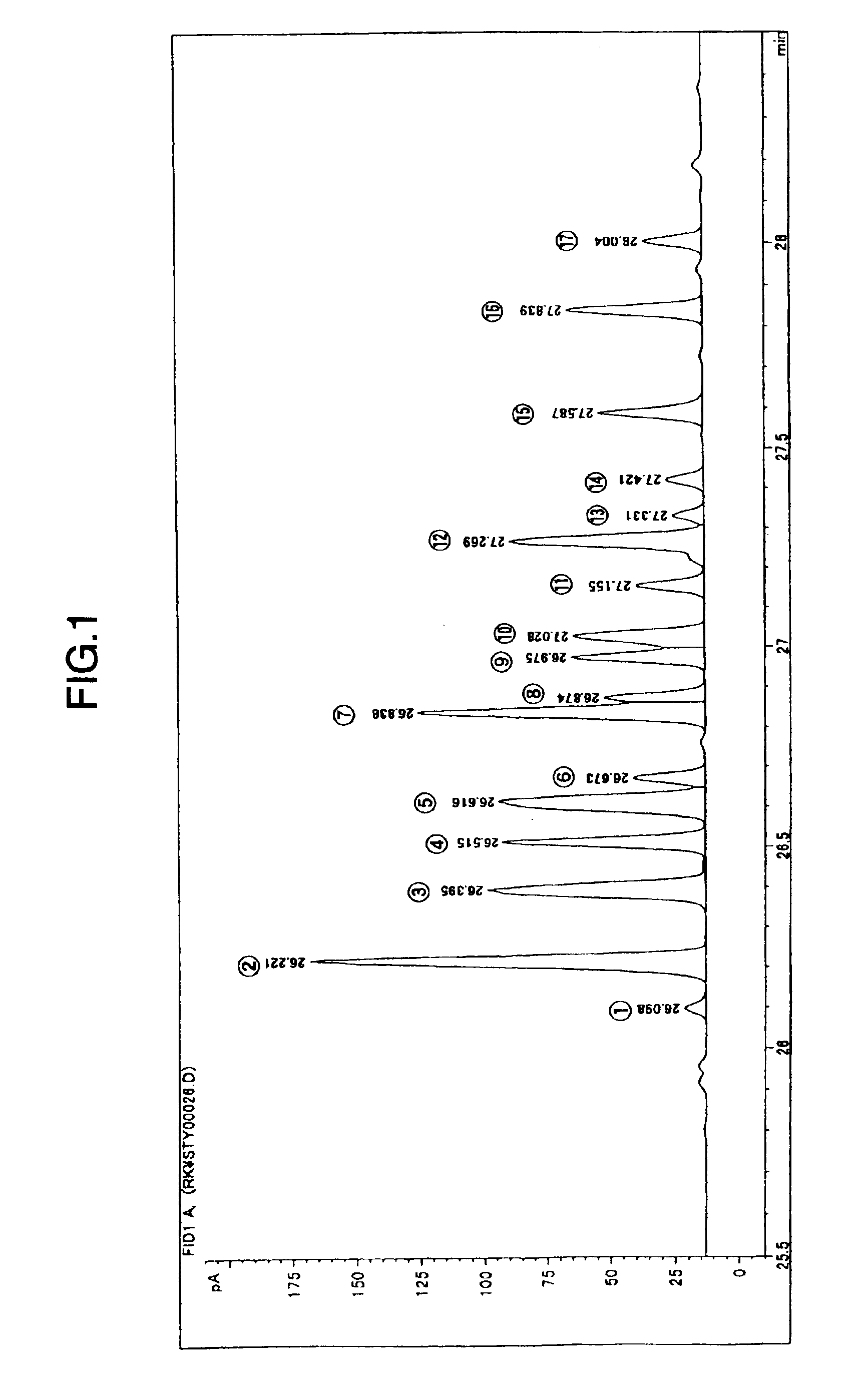Styrene polymer resin and composition thereof
- Summary
- Abstract
- Description
- Claims
- Application Information
AI Technical Summary
Benefits of technology
Problems solved by technology
Method used
Image
Examples
example 1
[0216]A set of polymerization equipment was prepared which was composed of the first polymerization vessel, i.e., a complete mixing type of polymerization vessel (4 L) equipped with an agitator, and the second polymerization vessel, i.e., a plug flow type of polymerization vessel (2 L) equipped with an agitator, connected in series. A line mixer equipped with an agitator was inserted between the first and second polymerization vessels.
[0217]A raw material solution containing 73.6% by weight of styrene, 18.4% by weight of n-butyl acrylate, 8% by weight of ethylbenzene and 300 ppm of 1,1-bis(t-butylperoxy)cyclohexane as an organic peroxide was fed at a rate of 0.9 l / hr into the top part of the first polymerization vessel and taken out from the bottom part of the vessel.
[0218]A raw material of the same composition as described above was fed additionally at a rate of 0.1 1 / hr, followed by mixing in a line mixer and passing through the second polymerization vessel from the top part downw...
example 7
[0225]The same equipment as in Example 1 was used. A raw material solution containing 73.6% by weight of styrene, 18.4% by weight of n-butyl acrylate, 8% by weight of ethylbenzene and 300 ppm of 1,1-bis(t-butylperoxy)cyclohexane as an organic peroxide was fed at a rate of 1.0 l / hr into the top part of the first polymerization vessel and taken out from the bottom part of the vessel. Then, the raw material solution as such was passed through the second polymerization vessel from the top part downward. The inner temperature of each polymerization vessel was controlled in the same manner as in Example 1. The polymer solution obtained was treated in the same manner as in Example 1 to obtain a styrene-based polymer.
examples 9 to 13
[0322]In these Examples, the kinds and amounts of acrylate esters, which compose the styrene-(meth)acrylate ester copolymer as component (A), were changed variously. These Examples show that superior resin performances can be exhibited by adjusting Vicat softening point and the like of the styrene-based polymer resin composition obtained, even if various kinds of (meth)acrylate esters are used.
PUM
| Property | Measurement | Unit |
|---|---|---|
| Temperature | aaaaa | aaaaa |
| Temperature | aaaaa | aaaaa |
| Fraction | aaaaa | aaaaa |
Abstract
Description
Claims
Application Information
 Login to View More
Login to View More - R&D
- Intellectual Property
- Life Sciences
- Materials
- Tech Scout
- Unparalleled Data Quality
- Higher Quality Content
- 60% Fewer Hallucinations
Browse by: Latest US Patents, China's latest patents, Technical Efficacy Thesaurus, Application Domain, Technology Topic, Popular Technical Reports.
© 2025 PatSnap. All rights reserved.Legal|Privacy policy|Modern Slavery Act Transparency Statement|Sitemap|About US| Contact US: help@patsnap.com



